Welcome to Leh Ladakh - The Gateway to Adventure, Culture, and the Majestic Himalayas! Ladakh Tourism invites you to explore the Himalayas through thrilling adventures like trekking, peak climbing, and mountain biking, while experiencing the rich Buddhist culture and ancient monasteries.
Renowned as the “The Land of High Passes”, Ladakh is a favourite among travelers due to its gorgeous scenery, dynamic lifestyle, rich religious tradition and vigorous way of living. Nature lovers, devotion and spiritual seekers and outdoor enthusiasts may discover comfort within this high-altitude desert tucked in the northern part of India. The incredible sight along with the rich historical past of Buddhism and its culture draws thousands of guests every year to learn the actual meaning of life and connect with the immense peace of nature.
The itinerary will function as a Ladakh travel guide, guiding the guests across the board range of activities, adventures, and experiences that make Ladakh a must-visit site, whether someone is looking for a thrilling excursion like river rafting or hiking or just wants to dive deep into the calm and peace of the hidden villages.
Foreign nationals need special permits to visit certain areas in Ladakh, such as Inner Line Permits (ILP) for Nubra Valley, Pangong Lake, and Tso Moriri, and Protected Area Permits (PAP) for other restricted zones.
Also Explore: Popular Tour Packages for Ladakh

| Region | North India |
| Became Union Territory on | 31st of October 2019 |
| Also Known As | The Land of High Passes |
| Famous for | Remote Mountain Beauty and Distinct Culture |
| Best Time to Visit Ladakh | May to September |
| Main Tourist Attractions | Zanskar Valley, Pangong Lake, Nubra Valley, Leh Palace, Magnetic Hill, Khardung La Pass..etc |
| Popular Tourism Activities in Ladakh | Trekking & Hiking, Mountain Biking, River Rafting, Monastery Visits, Camel Safari, Camping..etc |
| Ideal Duration to Visit | 6 - 8 Days |
| Best Time to Visit for Snow Activities | Winter Season (October to February) |
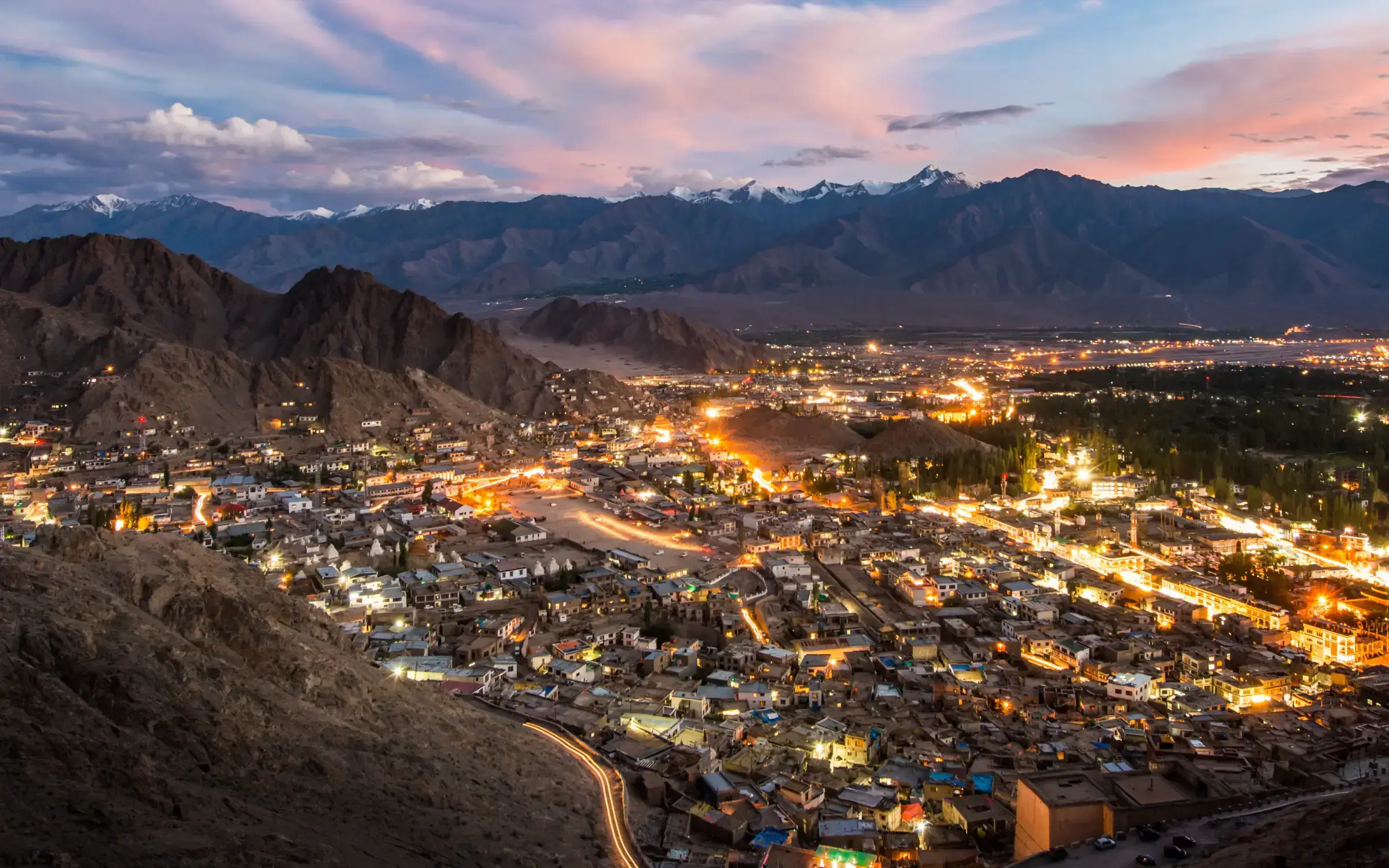
Ladakh is hidden between the majestic mountainous range of the Karakoram range and the Himalayas and is wonderfully concealed. The contested areas of Gilgit-Baltistan border the area to the northwest, Jammu and Kashmir to the southwest, the Indian state of the Himachal Pradesh to the south, and Tibet to the east. The region is among the most populated areas on Earth, with elevations ranging from roughly 9,000 feet in the valleys to 25,000 feet in the highest peaks. Because of its convenient location across the ancient Silk Route, Ladakh has historically been seen as a convergence of cultures, bringing together Indian faith, Tibetan Buddhism, and Central Asian influences.
Regardless of its harsh climate, which can be dropped as low as -30 degrees Celsius, and rough terrain, the Ladakh region is a dwelling home to a rich biodiversity, which includes rare species like snow leopard and Tibetan wild ass. The distinctive geography of the region and its historical significance make it an area of unparalleled spiritual magnificence and natural beauty.
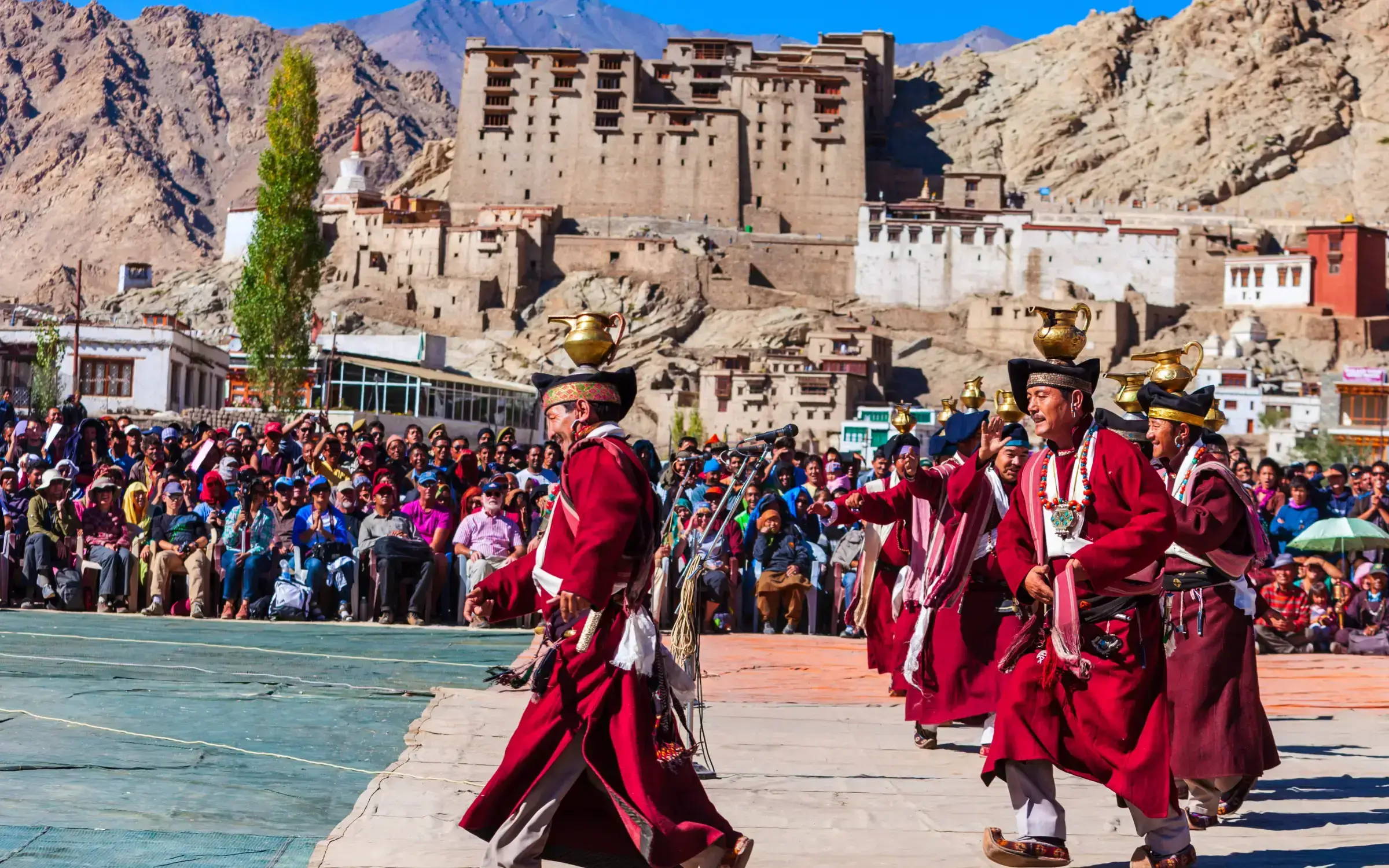
The history and culture of Ladakh have a complex connection with its remote setting and the many forces that have formed all through the ages. In earlier times, Ladakh served as a significant but crucial stop on the Silk Route which connected Silk and South Asia to bring various cultures and regions together. The area has several vestiges of the past of the region, which includes evidence and traces of pre-Neolithic human habitation by humans.
The Namgyal dynasty, which ruled over Ladakh as a powerful kingdom by the ninth century, was crucial in establishing the artistic and cultural landscape of the region. The Namgyal monarchs safeguard Ladakh from the neighbouring region's attacks while establishing a unique culture by promoting the propagation of Buddhism, which is still the main faith in the region today. Ladakh is famous for its vibrant Buddhist customs, with its rough terrain lined with monasteries, or 'gompas'.
The culture of Ladakh is defined by its celebrations, festivals, dance folk music, vibrant attire and a close relationship between the history of Tibet and Ladakh that are often displayed during the various celebrations of faith, including Losar and Tsechu. The past and culture of the area bear evidence of resilience and the continuing impacts of their past.

A few places like Ladakh on earth provide an unforgettable memory that is printed over the hearts of every visitor throughout their life. Some of the popular tourist places of Ladakh are-
Capital of Ladakh, Leh attracts tourists with its breathtaking surroundings, rich heritage of culture, and a chance to experience life among the densest populations in the world. Leh, which provides tourists with an unforgettable mix of faith, religion, spirituality, and stunning scenery, is an entrance to the breathtaking views of the Himalayas, located at an elevation of around 2,500 feet. The lovely location of the town, surrounded by the snow-capped mountains flowing into the into the Indus River, impresses tourists as soon as they eat into this heaven.
The landscapes are serene and beautiful, somewhat ethereal and the sky is a stunning shade of blue. The region surrounds it as a fantasy land for travel enthusiasts due to its unparalleled beauty and starkness.
Also known as the 'Valley of Flowers', Nubra Valley is a secret and popular tourist destination in Ladakh region that attracts travellers due to its unique scenery and unforgettable and incredible past. The Khardung La Pass can reach the valley, among the world's highest navigable highways, roughly around I50 km north of Leh. The journey to Nubra is a thrill and challenging in itself. Landscapes of the broad, drained stretches of the Nubra and Shyok rivers, lush green settlements, and barren hills greet tourists as they drop from the high-altitude pass into the valley. Observing the semi-mythical Hunder Valleys becomes more interesting by the view of double-hamp Bactrian camels, a legacy of the Silk Route.
A place where culture and traditions merge to life, Nubra Valley is a lot more than merely stunning beauty. Nubra Valley is an excellent spot for those who are looking for adventure to enjoy hiking and biking and discover beyond its picturesque towns like Turtuk, which have a unique Balti culture.
Visitors may enjoy a wonderful time that recalls a journey to a different planet in Zanskar, which is one of the most isolated and fascinating areas. Surrounded by peaks of snow and boasting rocky terrain, deep canyons, and clear rives, Zanskar is a high-altitude desert hidden in the eastern part of the Greater Himalayan range. To reach the gateway to Zanskar, visitors have to go through a few of the most challenging yet outstanding terrains. The path often includes crossing over the mountainous region of Pensi La Pass, which offers magnificent panoramas of the DrangDrung Glacier.
Because Zanskar is located so far away, fewer tourists come to visit it, resulting in a pristine, untouched component, which is uncommon in today's world. For people who are looking for faith, thrill, and a close connection with the natural world, Zanskar is heaven for them.
Nestled at an elevation of roughly 8,780 feet, Kargil is the second-largest village, best places to visit in Ladakh and is hidden on the banks of the Suru River. Several visitors connect Kargil largely with its vital involvement in the I999 Kargil war between India and Pakistan. Just a couple of kilometres from the town, the Kargil War Memorial in Dras preserves the legacy of the war and invites tourists to show their tribute to the soldiers who sacrificed their lives in war.
Additionally, Kargil serves as a beginning platform for exploring several most magnificent yet untouched areas of Ladakh. The bustling market in the town of Kargil provides an insight into the daily routines of the citizens, which makes it an active hub of the city. Kargil is an idyllic town that warmly greets guests and offers a unique chance to observe the courage and kindness of its local people.
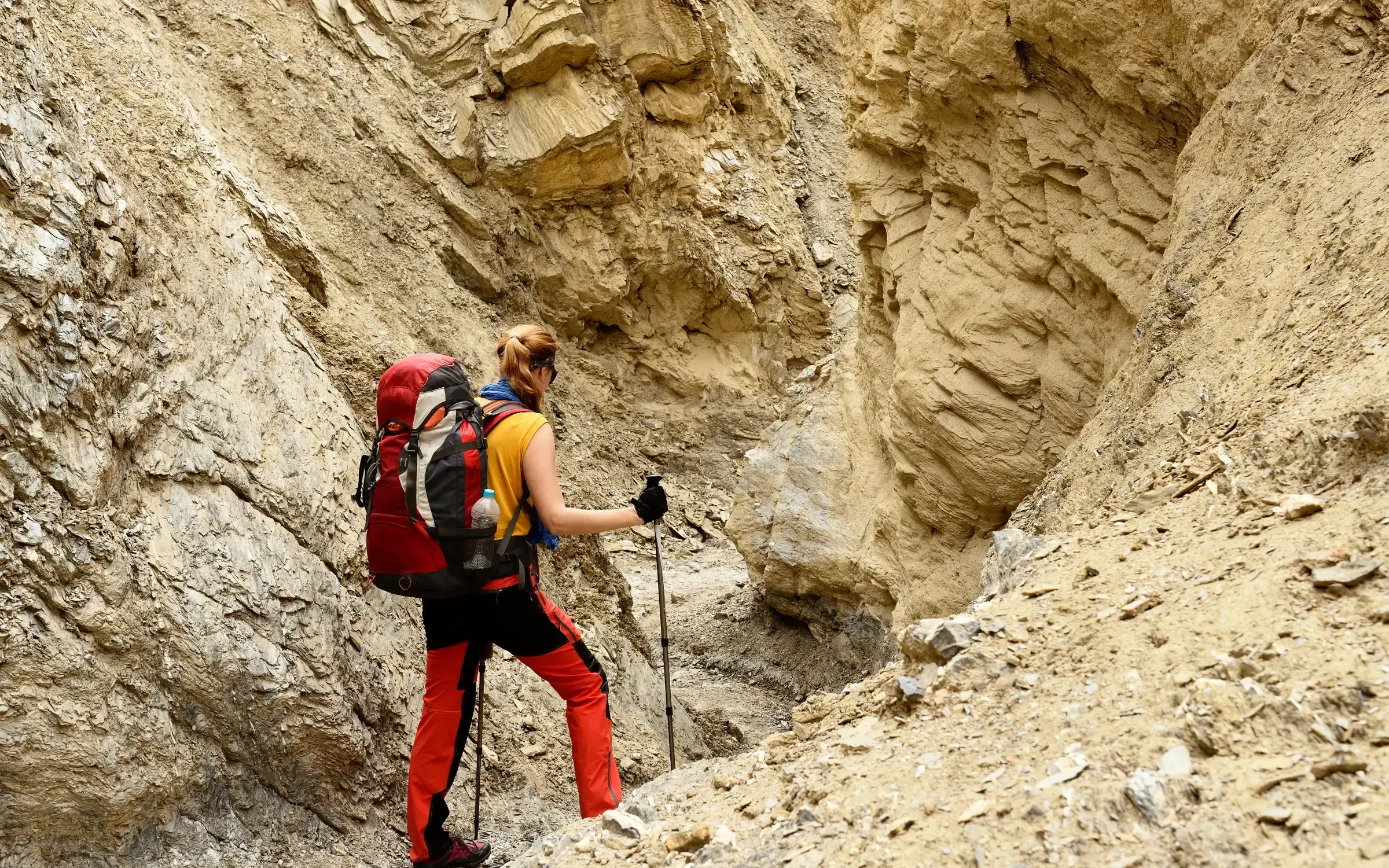
An adventure like none other than this could be experienced when hiking in Ladakh, in which trekkers can immerse themselves in some of the most beautiful and isolated places. Leh Ladakh tour provides tough hiking as well as mentally enlightening hikes against the setting of the majesty Himalayas and the barren elegance of the Tibetan Plateau. This high-altitude area offers an unearthly ambience due to its stunning mountain passes, bare desert, and deep river valleys. Hikers experience incredible panoramas at each turn across the old paths: peaks of snow breaching the sky, vividly coloured flowers sprinkled in the grasslands, and much more.
Ladakh offers some of the finest and most well-known hiking routes, that deliver a unique fusion of stunning natural beauty and deep culture exploration. Among the most desired hikes in the area, the Markha Valley trek gives amazing views of the Zanskar and Ladakh ranges. Overall, the memories of passing through the high mountains and reaching the summit are all a trekker's desire in Ladakh.
A truly memorable experience of riding across the world's most significant and challenging terrain, biking in Ladakh is a thrilling adventure that fascinates thrill seekers from around the globe. The high-altitude region highways offer an aesthetic treat and an endurance challenge as the biker's meander through the lunar-like Tibetan Plateau and the imposing Himalayas. The 480 km of Manali-Leh Highway ranks as one of the most popular biking paths in the world. Over some of the most amazing navigable traverses on earth, including the renowned Khardung La that rises to an astounding 18,380 feet, it passes.
The path features the hairbin bends, difficult climbs, and descends, icy areas, canyons huge valleys for riders to encounter. Bike riders left with lasting recollections of the thrilling sensation of biking through this detached and beautiful area.
Rafting in Ladakh is a thrilling adventure which combines the challenges and thrill of managing the tough water flows with the breathtaking splendour of the most beautiful scenery of the world. Both the Indus and Zanskar, two of India's finest and thrilling white-water rafting rivers, cross the rugged high terrain of Ladakh. A magnificent and incredible scene is created for this heart-pondering activity by the stark contrast of the wide, turbulent waters and barren, towering peaks that surround them.
The Indus River is among the popular white-water routes in Ladakh, particularly the stretch that runs from Pheny to Nimo. This path is suitable for beginners as well as those who desire additional relaxation after a rafting adventure because it provides a range of soft waves. Guests will notice the breathtaking vistas of customary and traditional Ladakhi towns, old monasteries hidden in the mountainous range, and the spectacular junction of the Zanskar River at Nimo which is the popular tourist attraction in Ladakh.
Ladakh's rough and high-altitude surroundings draw climbers from all over the world because of its thrilling and profound mountaineering experiences. Ladakh, frequently referred to as the 'Land of High Pass', is the site of several of the Himalayas' toughest and most beautiful peaks, which provides seasoned climbers and enthusiastic beginners with a chance to evaluate their skills over the panorama of gorgeous vistas. The high peaks in this area, a few of which rise above 600 meters, provide an impossible task due to their high altitude, intricate engineering, and quickly unpredictable weather.
At an elevation of 6,153 meters, Stok Kangri ranks as one of the largest and most popular summits for climbing in Ladakh. For climbers who are seeking to conquer their very first Himalayan peak, it's a relatively simple and easy climb.
A truly incredible experience, camping in Ladakh helps tourists to fully enjoy the pure beauty and peaceful solitude amongst the most stunning places on earth. Nestled amongst the Himalayan highlands, Ladakh offers a unique camping environment that is both serene and harsh. Its surroundings stand in contrast with the lush green settings encountered everywhere. Camping in Ladakh offers a unique chance to develop a close relationship with the natural world while getting far from the bustle of modern society.
This will be valued regardless of whether tourists decide to set up camp close to the sparkling blue water of Pangsong Tso, under the towering cliffs of Nubra Valley, or within the isolated nature of Markha Valley which is the best places to visit in Ladakh. Camping in Ladakh provides an unparalleled experience, whether tourists are willing to discover the hiking paths or outdoor enthusiasts wanting to soak in the elegance of the surroundings.
Taking place among some of the toughest environments on earth, Ladakh's fauna is just as unique and fascinating as the area itself. Several various types of species have adapted to live in the high-altitude desert environment of Ladakh, which has rugged terrain, wide valleys, and scant amounts of vegetation. Named 'Ghost of the Mountains', the snow leopard is one of the more striking species found in Ladakh.
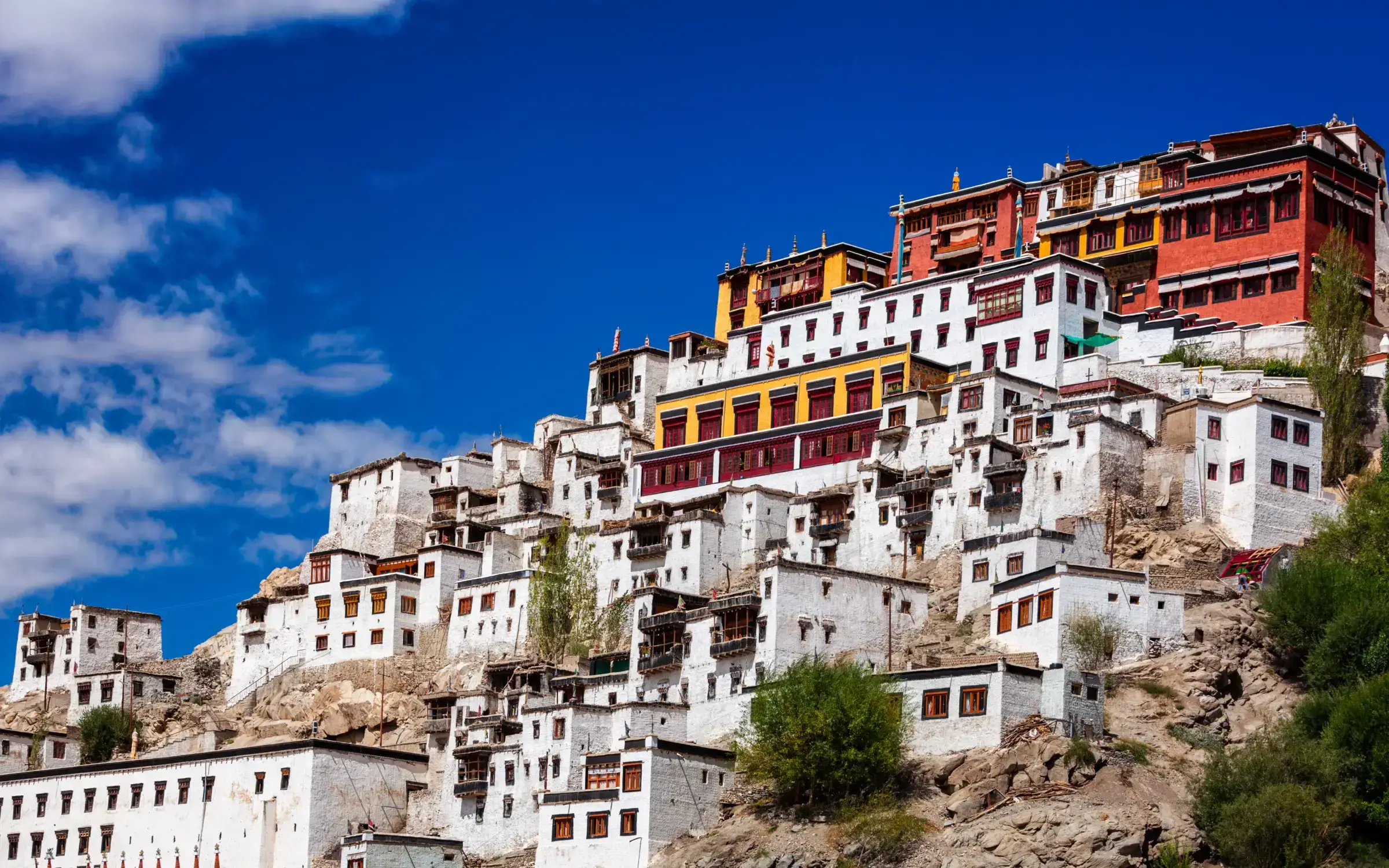
One of the most significant aspects of life within this Himalayan territory is Buddhism, which is deeply embedded in the social, religious, and social framework of Ladakh. Since monks from Tibet introduced Buddhism to Ladakh in the 7th century, it has left an important effect on the culture and identity of the region. Ladakh, sometimes referred to as 'Little Tibet', is a center of Tibetan Buddhism. The area is bursting with ancient monasteries, stupas, and temples, which all speak of the region's profound religious origins. These sites of prayers and devotions are also a places to learn, educational, artistic, and historical hubs where the teachings of Buddhas are learned from generation to generation.
Hemis Monastery, the largest and richest in the area, serves as one of the most famous and adored monasteries in Ladakh. Hemis, a 17th-century creation, is famous and top tourist place to visit in Ladakh because of its yearly celebration of the birth of the Guru Padmasambhava, a significant saint in Tibetan Buddhism, known as HemisTsechu. Devotees and tourists are both drawn to the courtyard of the monastery during the festivals, which come to life with vibrant mask dances, religious ceremonies, music, and much more. Ladakh's spiritual legacy is captured in the monastery, which also houses a wide range of old scriptures, thangkas, and writings.
Thiksey Monastery is often linked with Lhasa's Potala Palace because of its comparable design. Thiksey is a twelve-story building that is situated on a hilltop over the Indus Valley. It is a must-see place which is dedicated to the tall statue of the Maitreya Buddha in Ladakh, rising 15 meters tall. The monastery offers a center of yoga, meditation, and Buddhist studies and gives a calm, reflecting setting for tourists who have an interest in discovering more about the spiritual learning of Buddhism.
Alchi Monastery, the unique design and construction make it a renowned and one of the oldest monasteries in Ladakh and have been influenced by Kashmir. In contrast to most of the Ladakh monasteries that are hidden in the hilltop, Alchi is located on the plains, by the banks of the Indus River. Going back to the 11th century, the structure of the monastery is renowned because of its magnificent artworks, which represent various aspects of Buddhist iconography and mythology. Additionally, being the finest specimen of Indo-Tibetan art, these works of art throw significant light on the exchanges of culture that took place between Kashmir and Ladakh in the course of the Middle Ages.
Apart from these monasteries, Ladakh is additionally home to an enormous number of smaller temples and gompas, all having unique importance and heritage. One renowned landmark of the Diskit Monastery in Nubra Valley is the huge figure of Maitreya Buddha, who keeps guards over the valley and looks peaceful.

The unique topography, cultural heritage, and temperature of the region of Ladakh are apparent in the food, which offers an intriguing combination of tastes and components that are both filling and satisfying. Due to the harsh, high-altitude desert environment of Ladakh, the cuisine is intended to provide comfort and nourishment. Apart from Ladakh sightseeing, their dishes are often simple yet delicious, using regionally available food that has been specially modified for the challenging terrain. Although meat, particularly mutton and yak, serves a purpose in supplying the necessary energy and protein for enduring the harsh winters.
Thukpas, heart noodle soup, has become one of the most popular cuisines of Ladakh, loved by people across the entire region. Thukpa is generally prepared with noodles made from wheat and a sauce that might be vegetarian or non-vegetarian and often contains veggies, which include carrots, radishes, and leafy greens. This dish is rich and satisfying, perfect and ideal for the cold temperature of Ladakh.
Tsampa, which is prepared from roasted barley flour, 'Tsampa' is another vital item in the Ladakhi recipe. Use it as 'ngamp', a dough-like matter that is made from water or tea, or as a breakfast cereal by mixing it with butter or tea. Tsampa is a common food that has cultural significance in addition to being utilized in a number of spiritual rites and rituals.
Gur Gur Chai is a butter tea cuisine in Ladakh, which is a unique beverage in the region. Butter tea is a creamy and flavorful beverage that is made by blending tea with yak butter and salt. This tea offers both crucial fatty acids and hydration, both of which are particularly important in the chilled climate of Ladakh. The beverage, which is usually offered in antique wooden cups, is essential for social occasions since it gives warmth and comfort in cold surroundings.
Skyu is an additionally typical Ladakhi cuisine, which is a sort of pasta from the dough of wheat that has been prepared in a rich stew with vegetables or meat in small thum-sized pieces. This recipe, which is healthy and filling, perfectly captures the core of Ladakhi comfort food.
Ladakh tourism offers a shopping paradise for tourists due to its beautiful local products as well as its amazing scenery and rich culture. Because of the distinct topography and cultural influences, a broad spectrum of traditional handicrafts emerged, which are a reflection of the skills of the individuals, artistic emotions, and customs. Pashmina Shawls are some of the most desired handicrafts in Ladakh. This magnificent and beautiful shawl that is famous for its softness, warmth, and complex patterns is made from the fine wool of the pashmina goat, which is native to the high-altitude regions of the Ladakh.
Ladakh is also famous for its metalwork, especially when it comes to copper and brass. Traditional things like tea kettles, prayer wheels, and butter lamps are often found in the market. These metals, which often include intricate decoration, are proof of the skilled artisans of the area.
The traditional Ladakhi carpet, which is also known as 'namda', is another desired item. This is made up of wool and woven by hand using a fetching technique; Namba is long-lasting and aesthetically pleasing, a perfect material to bring a touch of elegance of Ladakh into any home.

Because the area is easily accessible and the climate is often warm, late May to early October is the perfect time to explore Ladakh. Due to its extremely high-altitude desert environment, Ladakh has an unusual climate with significant differences in day and nighttime conditions, moisture, and harsh temperature.
Weather and Climate:
Weather and Climate:
Weather and Climate:
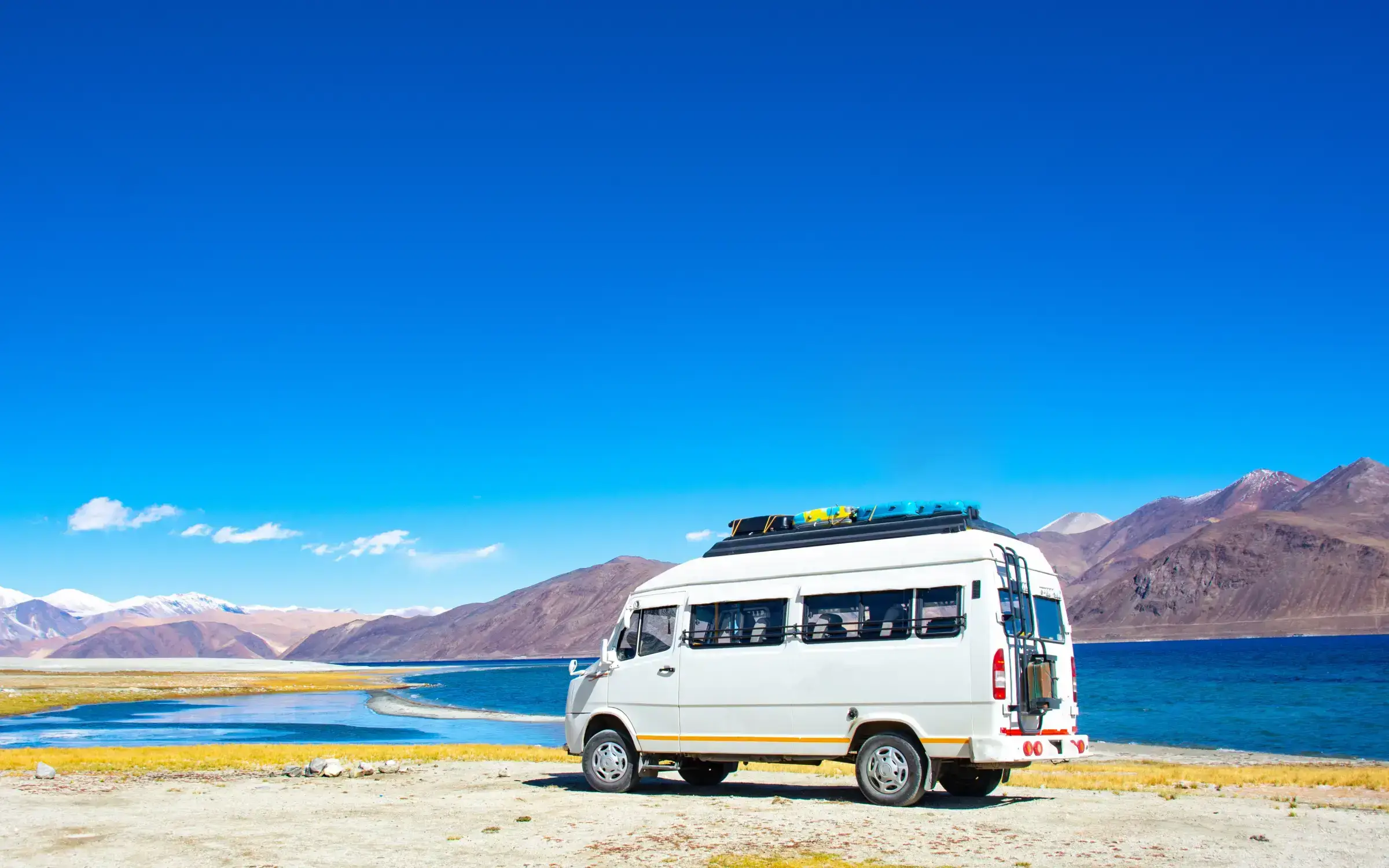
Ladakh is far more than just simply a trip, it is a must visit place which includes a dive among the most beautiful and historically diverse areas of India. This place is a combination of serene beauty and learning; from the monasteries to learn and get a profound place to meditate and connect with the deep spirituality to relaxing the mind in the calm and composed nature of the region, this place has everything for everyone to offer.




